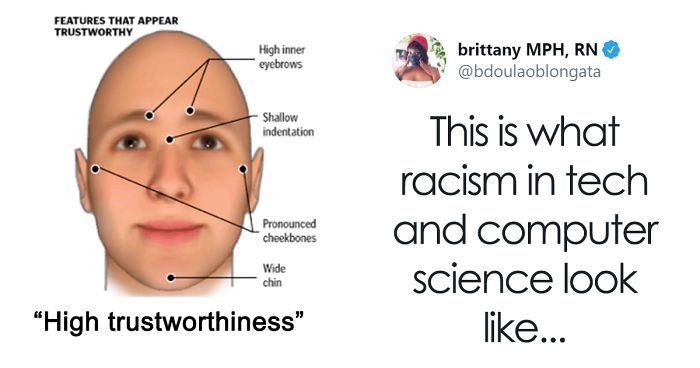
New AI Tells If A Person Is Perceived As ‘Trustworthy’ Based On Their Face And Some People Find It Problematic
InterviewFrench researcher Nicolas Baumard shared news about his and his colleagues’ latest research only to create a fierce storm of debate. Now, Twitter users are divided about how to react to the algorithm that automatically evaluates the ‘perceived trustworthiness’ of faces in historic European portraits.
Some people were interested to read Baumard’s insights about rising perceived trustworthiness levels in paintings over time and how they correlated to the appearance of liberal values and better living standards. But others went on the warpath. Some Twitter users branded the algorithm as ‘racist’ and linked it to phrenology. Meanwhile, others said that critics may not have read or understood the paper fully and rushed to conclusions.
Bored Panda reached out to the researchers. According to head researcher Lou Safra, the algorithm never intended to detect who is trustworthy or not but who would be perceived as trustworthy or not. “These are of course two different things: someone may appear untrustworthy and be very nice and, on the opposite, someone may be always looking nice and exploit people’s trust all the time. We were interested in measuring whether people want to look friendly.” Read on for Safra’s other insights and clarifications.
You can read the full research paper right here.
This tweet saying that the research and the algorithm were allegedly ‘racist’ went viral
Image credits: bdoulaoblongata
Image credits: baumard_nicolas
One of the study’s researchers put the algorithm into context and explained everything in detail
Image credits: baumard_nicolas
Image credits: baumard_nicolas
Image credits: baumard_nicolas
Image credits: baumard_nicolas
Image credits: baumard_nicolas
Image credits: baumard_nicolas
Image credits: baumard_nicolas
Image credits: baumard_nicolas
Image credits: baumard_nicolas
Image credits: baumard_nicolas
Image credits: baumard_nicolas
“When people take a picture of themselves for professional purposes, they may choose a particular pose and facial expression in order to advertise that they are competent in their job. However, they may choose a different pose and facial expression if they choose a picture for social media because they want to convey a different message. The type of message people were willing to convey is exactly what we were interested in, but at the historical level,” Safra gave an example.
Researcher Safra explained: “We based our analysis on existing data in social cognition showing that people from different cultures agree on some of the facial features that are associated with more or less perceived trustworthiness—it thus seems that some of the elements guiding impressions of trustworthiness are ‘shared’ by different cultures. Of course, it does not imply that everybody will agree on whether or not a specific face appears trustworthy.”
The researcher continued: “First impressions people form from faces are indeed influenced by individual-specific features (such as the persons you met before and the type of social interaction you had with them) but they are also influenced by these ‘shared’ elements. Based on the fact that these ‘shared’ elements are used by people from different cultures and based also on theoretical work on the evolution of emotional expression, we made the hypotheses that some of these ‘shared’ elements were also perceived as displays of trustworthiness in the past.”
According to Safra, if we asked today’s participants how trustworthy a sitter on a painting of the 16th century looks, they might use cues such as the outfit and painting style or even their knowledge about this period for making inferences. “In other words, cues that had a completely different meaning in the 16th century. This is why we designed an algorithm that is blinded to these irrelevant cues and that only produces perceived trustworthiness scores based on the ‘shared’ elements,” Safra said.
“More precisely, we trained our algorithm on avatars representing people from different ethnicities and that have been shown to vary in their degree of perceived trustworthiness in different populations—this was completely automated (we did not decide which trait to include) and based on previously validated research. Our goal was really to create a tool for measuring how much people from the past wanted to advertise trustworthiness in their portraits— nothing to do with inferring their actual level of trustworthiness or with profiling.”
Image credits: baumard_nicolas
While some Twitter users have said that the researchers are essentially conducting phrenology, this isn’t the case: it’s not about detecting personality traits from the shape of the skull but about detecting the facial expressions chosen by the painter or the subject. These expressions show what people choose to signal as their cultural environment changes.
Baumard’s research found that perceived trustworthiness in portraits between the years 1500 and 2000 increased, alongside a drop in interpersonal violence, as well as the rise of democratic values in Western Europe. Among these liberal values are religious tolerance and political freedom.
What’s more, the research suggests that the rise of displays of trustworthiness is closely linked to increased living standards. These include better economic performance, lower crime rates, and more inclusive institutions.
So, in short, as people have more and more money, and their quality of life increases, they’re more likely to trust others and to display themselves in a trustworthy manner. And this is expressed more and more through the paintings that artists draw.
According to the researchers, their results were consistent with other research documenting the so-called ‘Smile Revolution’ and “a rise of prosocial displays in paintings and in novels.” Baumard also drew attention to their findings that those people who live in places where trust and cooperation are higher displayed higher levels of trustworthiness in their selfies.
People had a lot to say about the results and both criticized and defended the research
Image credits: YOONGIIll
Image credits: tymwol
Image credits: Meliseymo
Image credits: YoungOG_RV
Image credits: ApplecookedDane
Image credits: DrUnicornPhD
Image credits: miniMaiasaura
Image credits: SamColl58124830
Image credits: ravlun
Image credits: AyoSwain
Image credits: AyoSwain
Image credits: deep_sea_blob
Image credits: alienjames2000
Image credits: Kaldorei_Life
Image credits: Kaldorei_Life
35Kviews
Share on FacebookI think the Biden VS Trump one is bias since you need a grumpy picture of both for a fair comparison.
Well anything about politics here is definitely wrong. Not saying any of them are better than the other because politicians are crappy biologists.
Load More Replies...Do not politicise scientific research, paricularly if you do not fully understand it!
I think that whether we trust people with certain facial features or not depends mostly on our personal experience. Some faces may appear more aggressive (higher levels of certain hormones do change our facial expression), and who would trust an aggressive person? In most cases, one would be wary or would try to stay away, I think.
Basically it's just another storm in a glass of water. In 48 hours everyone will fight another anti-racist, anti-sexist or pro- or anti- abortion battle.
Yup. We're a generation of online activists. Most will not risk anything worse than having a comment disliked, but things rarely go beyond that.
Load More Replies...Isn't trustworthiness a personal feeling one has towards the other? For example, if a person was betrayed at some point in his life by, let's say, a ginger, he might have unconscious bias towards ginger people. And I don't think it's possible to accurately analyze personal feelings.
Of course it is not possible to accurately analyze personal feelings - on an individual level. That is the point of this research: to statistically sum up vague feelings of "are gingers trustworthy" into a clear cut yes/no/maybe. So if one ginger has betrayed you, and all the other have not betrayed anybody, then your opinion is irrelevant.
Load More Replies...I still don't see the link with racism: software that copies the human perception isn't racist. Maybe human perception can be questioned but a machine that copies behavior doesn't know anything about race. The problem with race is that anyone that looks at a reason to be offended jumps on it: we worked in facial recognition a few years ago and it was performing poorly on black skin.. just some evil racist software, right. No one questioned that maybe the universe's physics are racist then because black skin isn't as reflective and shadows are not as visible and contrast is lower. I think every camera that uses light to capture images must be racist then. Not everything is racism but idiots jump on it right away.
Early films were engineered to have a colour sensitivity that would be more suitable for pale skin. Racism? Or just a tell tail of systematic racism (whites being richer, and more likely customers of the film manufacturers). Is there a similar issue with facial detection algorithms? Is the initial sobel filtering to detect edges in a face the best way for feature extraction? Or just the best way the early researchers could think of (because again due to systemic racism, they probably stared at a pale face in the mirror every morning)? The problem everybody seems to have is to mix up "hatered based", systematic and "can't help my gut feeling" racism. They are three very different things.
Load More Replies...It's VERY important to read and understand that this is about "perceived trustworthiness." The word, "perceived" is the key. The study's author isn't claiming that the attributes accurately reflect whether a person is trustworthy. The study is about PERCEPTION.
I don’t understand how it would be possible to conclude that a certain feature in different cultures and different time periods can represent the same thing (“perceived trustworthiness”). I mean, they cannot make a time machine and run the experiment with the people that lived at that era. They are just guessing/assuming. And I don’t think it is correct to assume that social cooperation and trust increased after the “enlightenment” era. The cultural changes went from a “collectivist” view to a more individualistic and competitive comprehension of society.
This is old hat. I read a similar paper done 40 years ago. People are freaking out...why again? They're talking about PERCEIVED trustworthiness, not actual. It's about first impressions and reading facial expressions, not inherent characteristics. ...///... I guess we can always trust the stupid and the vapid to misinterpret everything they ever see.
This article is biased, racial (why all white? Afraid of BLM?) And just a worthless waste of time.
AI is going to be the next thing that causes racial inequality. We'll fix the whole incarceration thing and other things, then AI will come along. It never ends. Also, AI causing injustice is its true danger, not that it will take over the world. Police departments are already putting it to frightening use. Of course, there will be 20 years of injustice as a result before we even think of fixing laws to address it.
No one mentions the fact that Russians, especially Muscovites, are very distrustful of people they don't know who smile at them.
Trustworthiness for me only comes from one physical feature and that's the kind cold or crazy eyes. The rest is just various levels of not their fault features but making serial killer eyes is something trustworthy people can turn on and off
Like the girl from the crazy girlfriend memes she turns them on for that video and has normal eyes the rest of the time but people like Charles Manson couldn't ever turn them off even when his freedom depended on it
Load More Replies...AIs are only as good as the data they are given, and abstract concepts like "trustworthiness" even before you add race is problematic. When you add in race, and especially cross-race data, the AI cannot avoid the all-too-human problem of bias.
I dunno, in the first picture the trust worthy looking guy looks like the type of person that would leave you hanging in the wind at the first sign of trouble. No scientific proof just my hanging in the wind expertise.
Call me racist, but I agree. I can trust that he means good, but I just know that when the s**t hits the fan, he won't deliver. Weird how much our gut feel can tell.
Load More Replies...The aim and means of the study confuse me. Do they want to see how the frequency of représentation of 'trustworthiness' change over time (most of the analysis) or do they want to see how the représentation of trutsworthiness change over time (some of the paragraphs)? Plus you can't say that certain traits inherently represent trustworthiness. At most, you can say that over time, people were shown with less tension and agressivity - which is globally true is Western art.
Why absolutely no mention of how the "untrustworthy" faces were usually frowning, whereas the "trustworthy" faces were generally smiling.
Maybe there weren't too many paintings of black people back then that could now be analyzed?
Load More Replies...Since this is trying to codify "perceived trustworthiness", I think your conclusion of "pseudo science" is both wrong and unnecessarily hateful. Also jumping to the a priori conclusion of real trustworthiness not being codifyable is a bit premature? Or how much work have you done in the field?
Load More Replies...I think the Biden VS Trump one is bias since you need a grumpy picture of both for a fair comparison.
Well anything about politics here is definitely wrong. Not saying any of them are better than the other because politicians are crappy biologists.
Load More Replies...Do not politicise scientific research, paricularly if you do not fully understand it!
I think that whether we trust people with certain facial features or not depends mostly on our personal experience. Some faces may appear more aggressive (higher levels of certain hormones do change our facial expression), and who would trust an aggressive person? In most cases, one would be wary or would try to stay away, I think.
Basically it's just another storm in a glass of water. In 48 hours everyone will fight another anti-racist, anti-sexist or pro- or anti- abortion battle.
Yup. We're a generation of online activists. Most will not risk anything worse than having a comment disliked, but things rarely go beyond that.
Load More Replies...Isn't trustworthiness a personal feeling one has towards the other? For example, if a person was betrayed at some point in his life by, let's say, a ginger, he might have unconscious bias towards ginger people. And I don't think it's possible to accurately analyze personal feelings.
Of course it is not possible to accurately analyze personal feelings - on an individual level. That is the point of this research: to statistically sum up vague feelings of "are gingers trustworthy" into a clear cut yes/no/maybe. So if one ginger has betrayed you, and all the other have not betrayed anybody, then your opinion is irrelevant.
Load More Replies...I still don't see the link with racism: software that copies the human perception isn't racist. Maybe human perception can be questioned but a machine that copies behavior doesn't know anything about race. The problem with race is that anyone that looks at a reason to be offended jumps on it: we worked in facial recognition a few years ago and it was performing poorly on black skin.. just some evil racist software, right. No one questioned that maybe the universe's physics are racist then because black skin isn't as reflective and shadows are not as visible and contrast is lower. I think every camera that uses light to capture images must be racist then. Not everything is racism but idiots jump on it right away.
Early films were engineered to have a colour sensitivity that would be more suitable for pale skin. Racism? Or just a tell tail of systematic racism (whites being richer, and more likely customers of the film manufacturers). Is there a similar issue with facial detection algorithms? Is the initial sobel filtering to detect edges in a face the best way for feature extraction? Or just the best way the early researchers could think of (because again due to systemic racism, they probably stared at a pale face in the mirror every morning)? The problem everybody seems to have is to mix up "hatered based", systematic and "can't help my gut feeling" racism. They are three very different things.
Load More Replies...It's VERY important to read and understand that this is about "perceived trustworthiness." The word, "perceived" is the key. The study's author isn't claiming that the attributes accurately reflect whether a person is trustworthy. The study is about PERCEPTION.
I don’t understand how it would be possible to conclude that a certain feature in different cultures and different time periods can represent the same thing (“perceived trustworthiness”). I mean, they cannot make a time machine and run the experiment with the people that lived at that era. They are just guessing/assuming. And I don’t think it is correct to assume that social cooperation and trust increased after the “enlightenment” era. The cultural changes went from a “collectivist” view to a more individualistic and competitive comprehension of society.
This is old hat. I read a similar paper done 40 years ago. People are freaking out...why again? They're talking about PERCEIVED trustworthiness, not actual. It's about first impressions and reading facial expressions, not inherent characteristics. ...///... I guess we can always trust the stupid and the vapid to misinterpret everything they ever see.
This article is biased, racial (why all white? Afraid of BLM?) And just a worthless waste of time.
AI is going to be the next thing that causes racial inequality. We'll fix the whole incarceration thing and other things, then AI will come along. It never ends. Also, AI causing injustice is its true danger, not that it will take over the world. Police departments are already putting it to frightening use. Of course, there will be 20 years of injustice as a result before we even think of fixing laws to address it.
No one mentions the fact that Russians, especially Muscovites, are very distrustful of people they don't know who smile at them.
Trustworthiness for me only comes from one physical feature and that's the kind cold or crazy eyes. The rest is just various levels of not their fault features but making serial killer eyes is something trustworthy people can turn on and off
Like the girl from the crazy girlfriend memes she turns them on for that video and has normal eyes the rest of the time but people like Charles Manson couldn't ever turn them off even when his freedom depended on it
Load More Replies...AIs are only as good as the data they are given, and abstract concepts like "trustworthiness" even before you add race is problematic. When you add in race, and especially cross-race data, the AI cannot avoid the all-too-human problem of bias.
I dunno, in the first picture the trust worthy looking guy looks like the type of person that would leave you hanging in the wind at the first sign of trouble. No scientific proof just my hanging in the wind expertise.
Call me racist, but I agree. I can trust that he means good, but I just know that when the s**t hits the fan, he won't deliver. Weird how much our gut feel can tell.
Load More Replies...The aim and means of the study confuse me. Do they want to see how the frequency of représentation of 'trustworthiness' change over time (most of the analysis) or do they want to see how the représentation of trutsworthiness change over time (some of the paragraphs)? Plus you can't say that certain traits inherently represent trustworthiness. At most, you can say that over time, people were shown with less tension and agressivity - which is globally true is Western art.
Why absolutely no mention of how the "untrustworthy" faces were usually frowning, whereas the "trustworthy" faces were generally smiling.
Maybe there weren't too many paintings of black people back then that could now be analyzed?
Load More Replies...Since this is trying to codify "perceived trustworthiness", I think your conclusion of "pseudo science" is both wrong and unnecessarily hateful. Also jumping to the a priori conclusion of real trustworthiness not being codifyable is a bit premature? Or how much work have you done in the field?
Load More Replies...
 Dark Mode
Dark Mode 

 No fees, cancel anytime
No fees, cancel anytime 




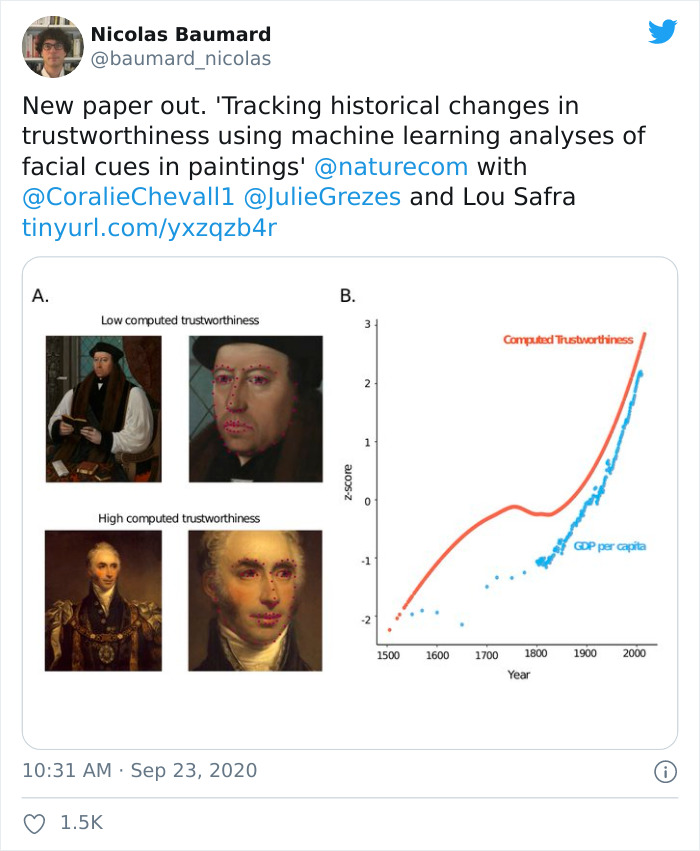
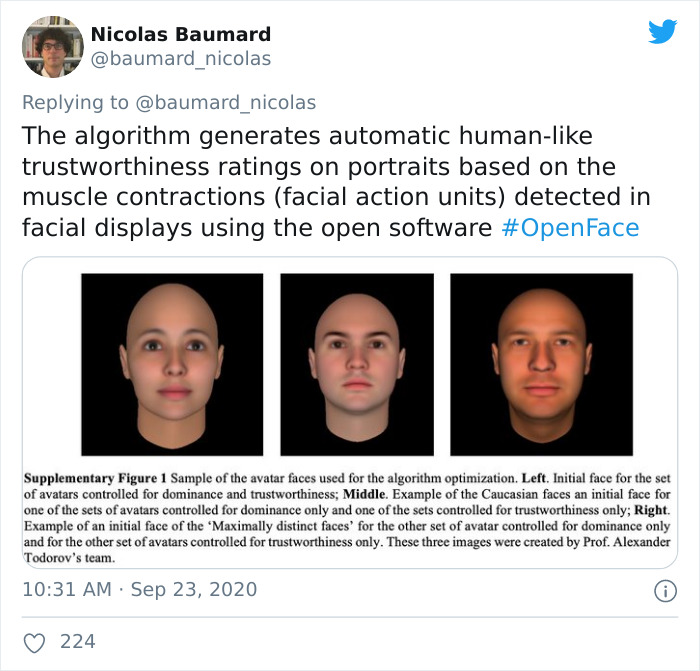
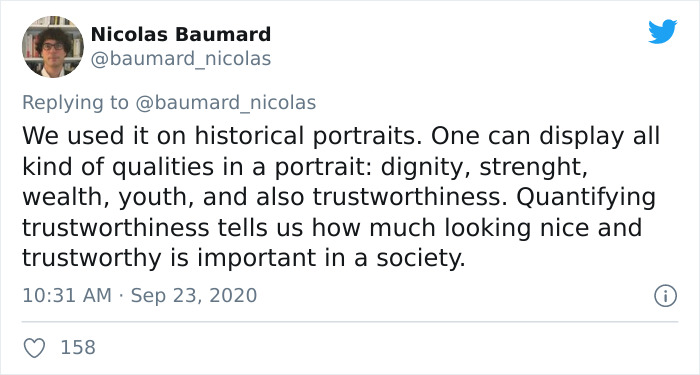

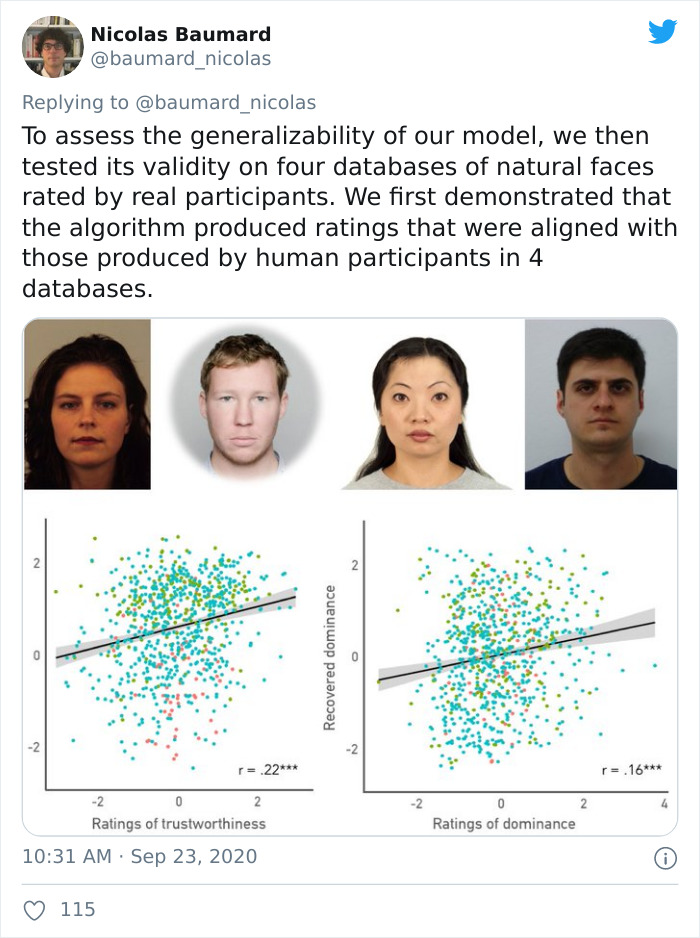
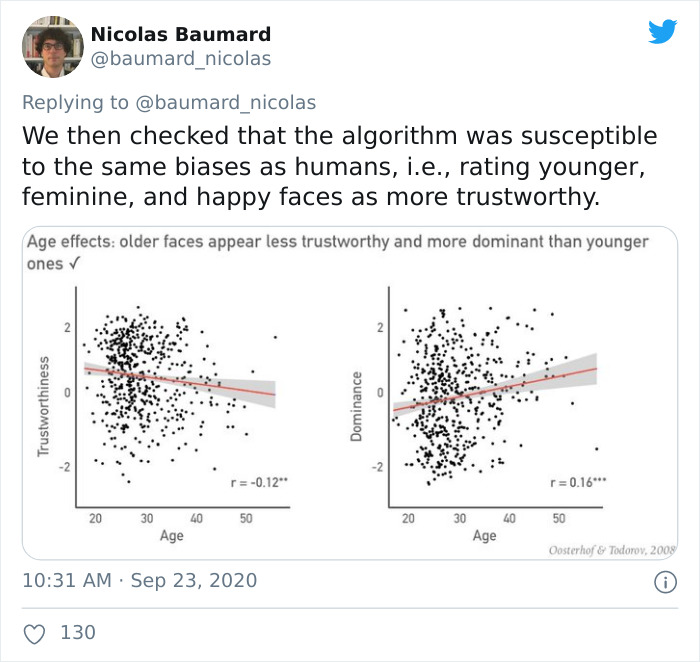
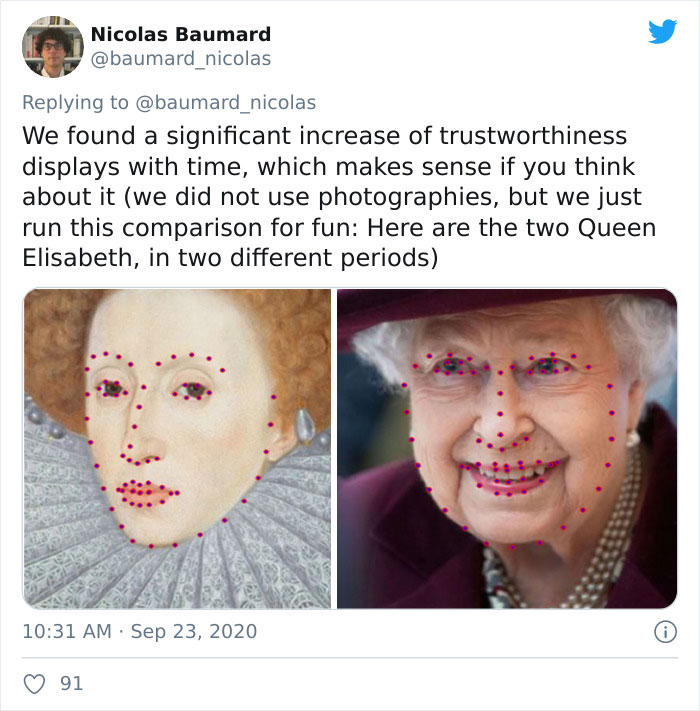
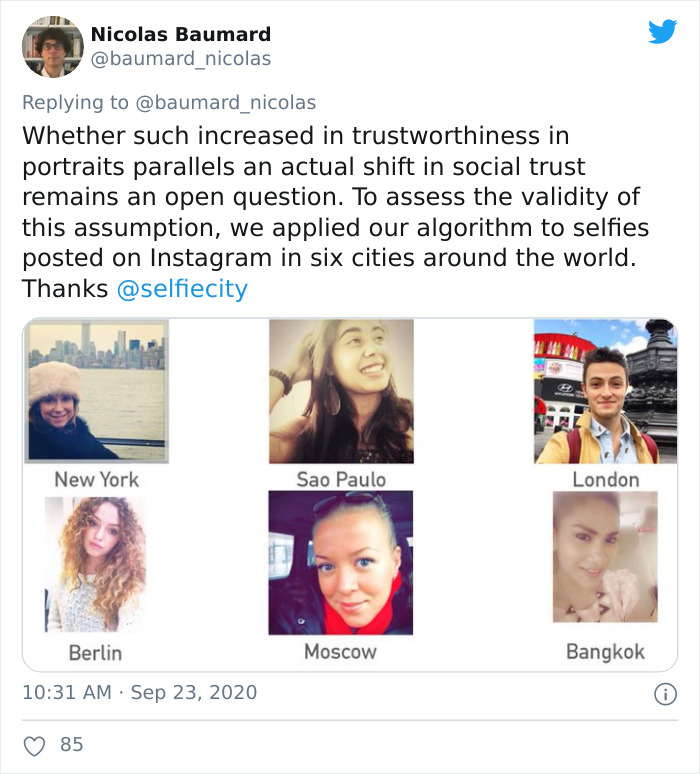
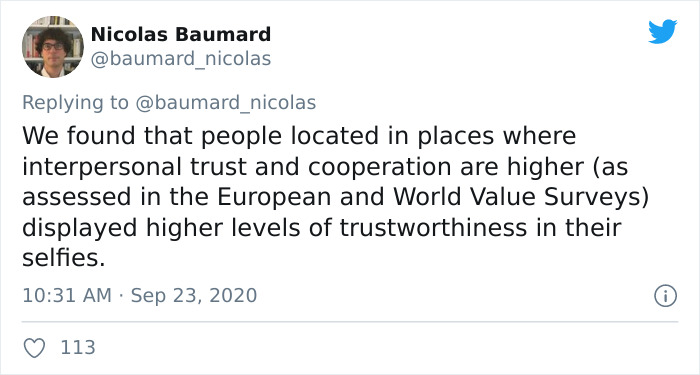
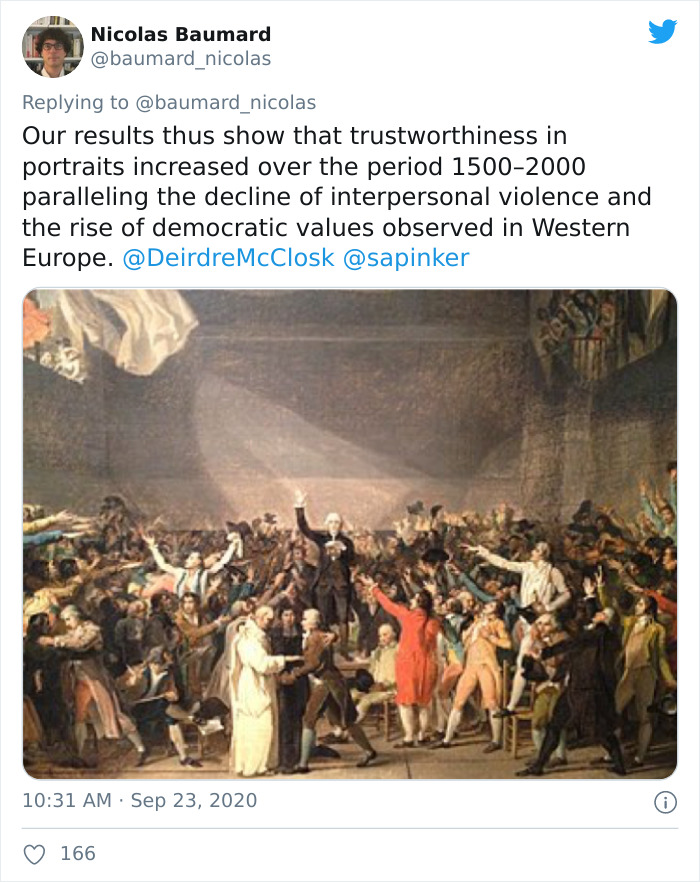

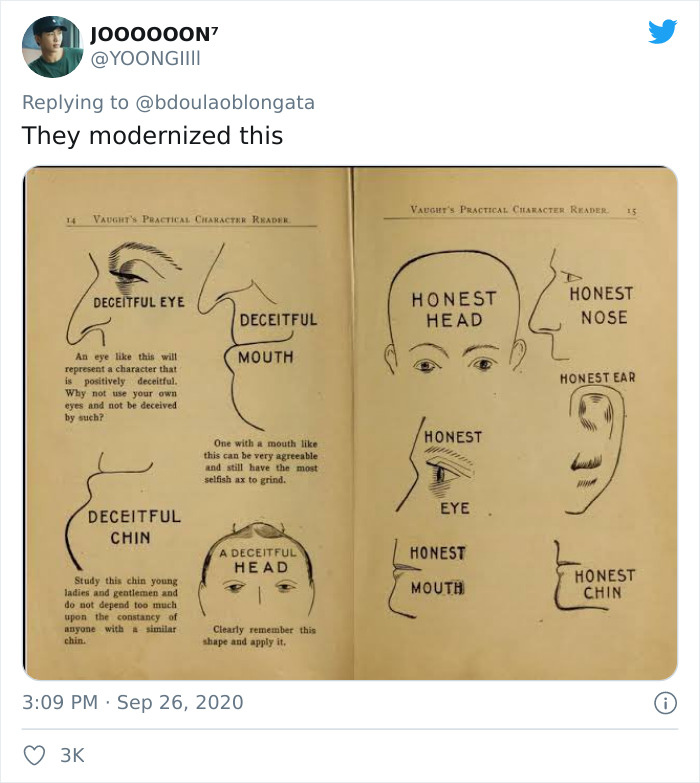

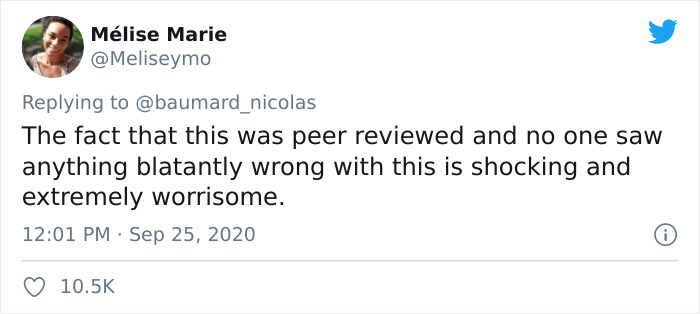
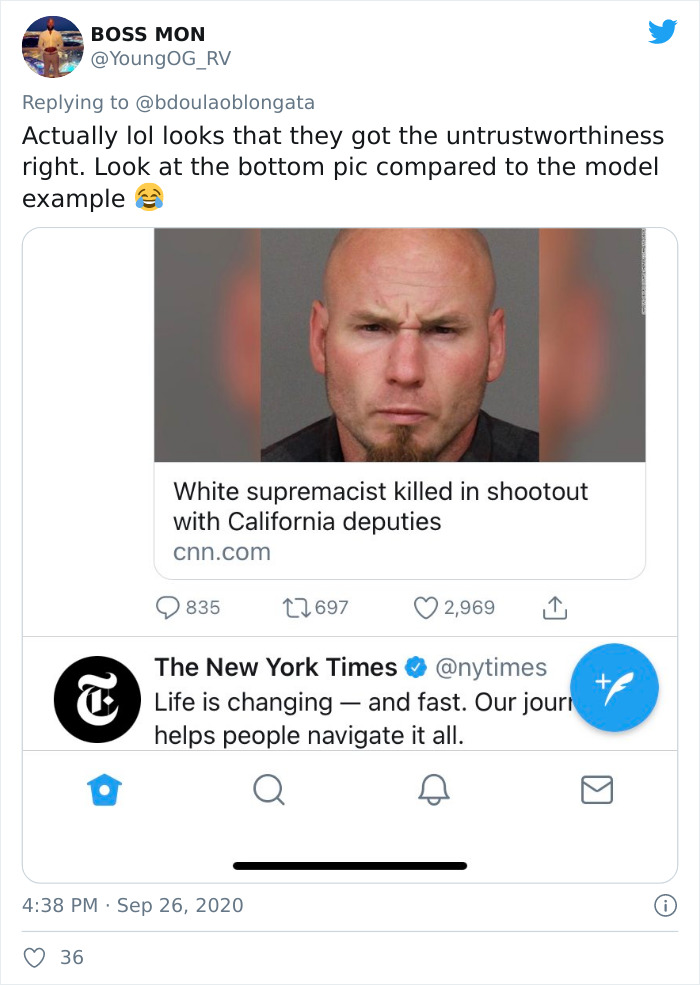


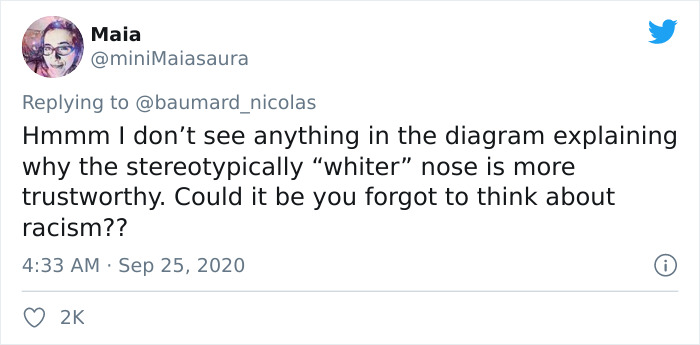
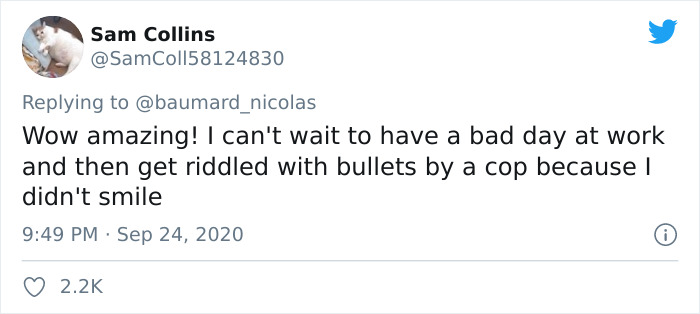
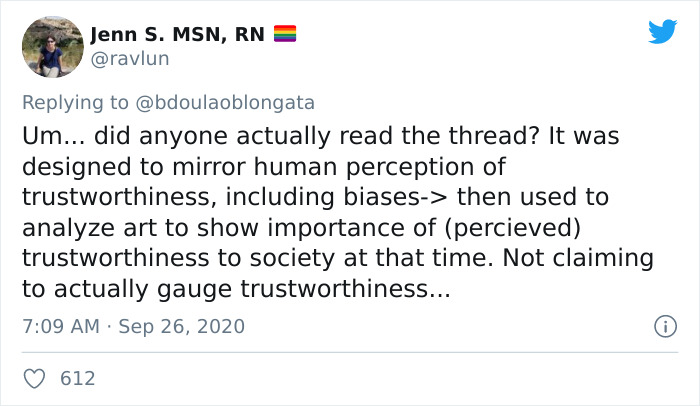

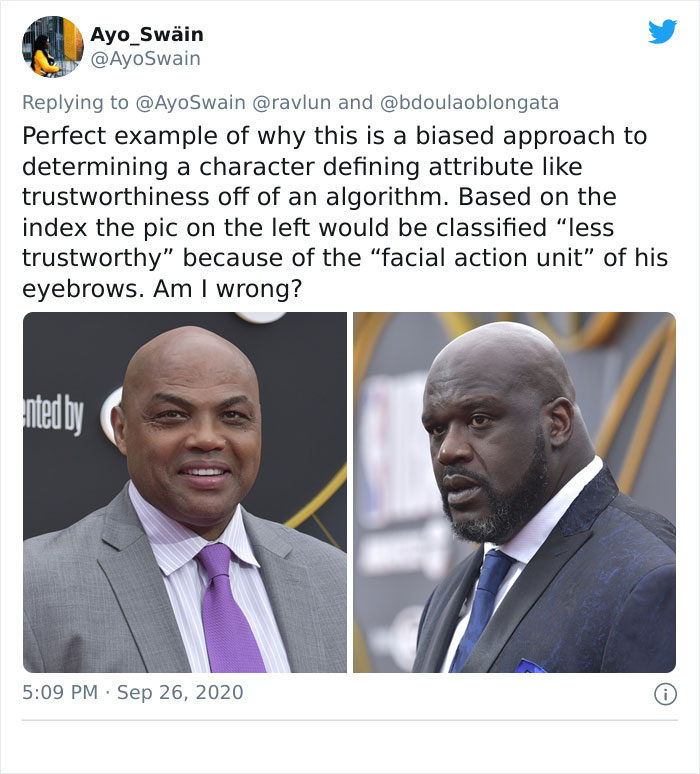
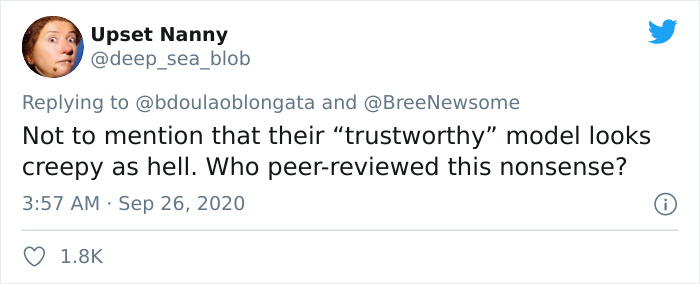
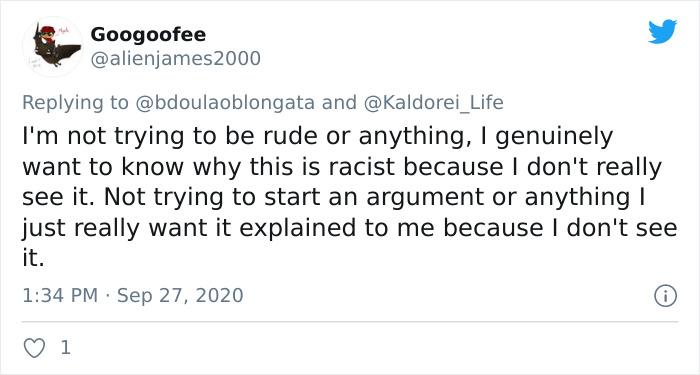
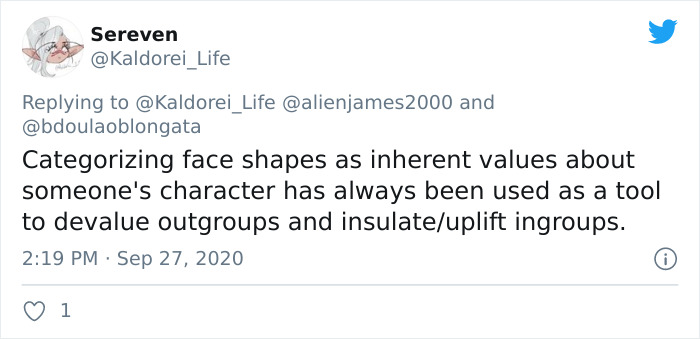
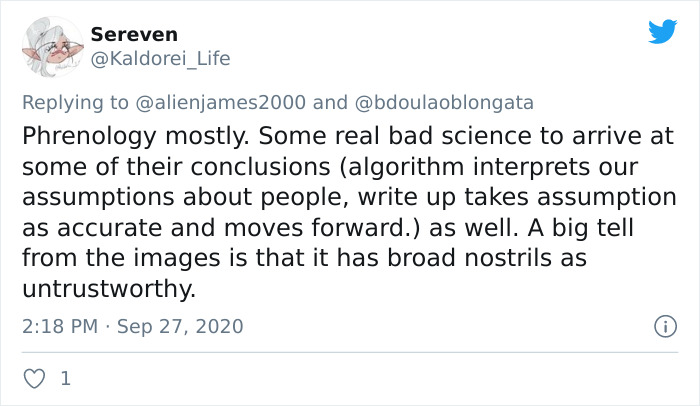
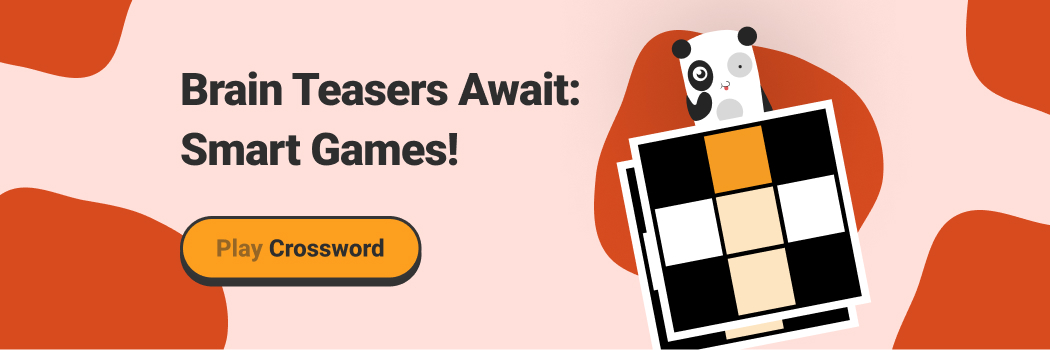






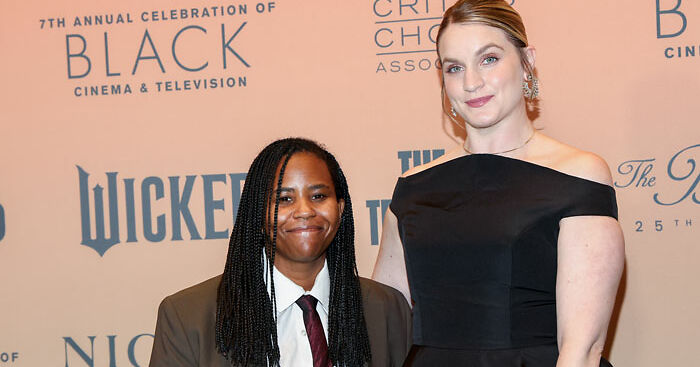





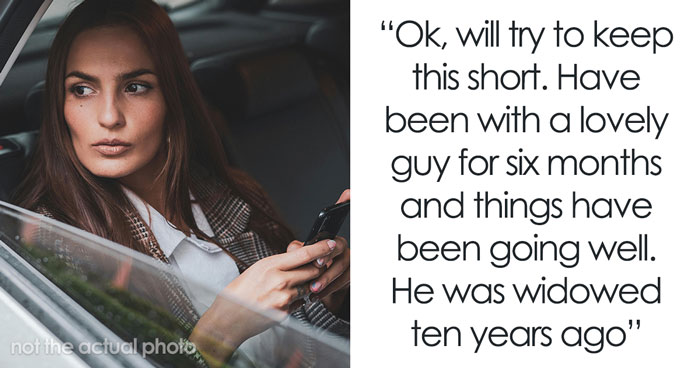

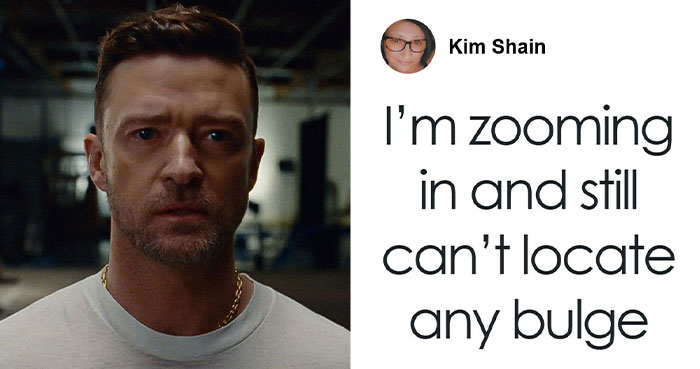

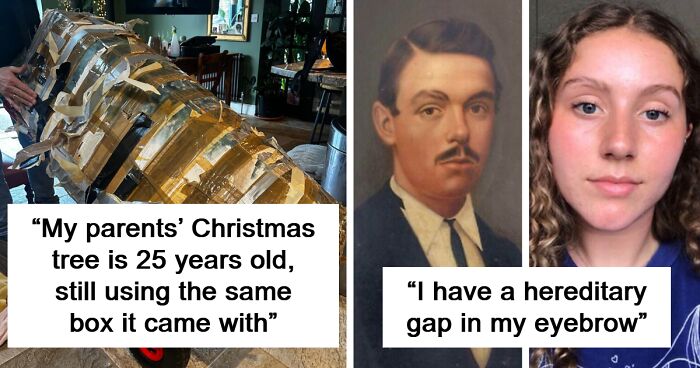
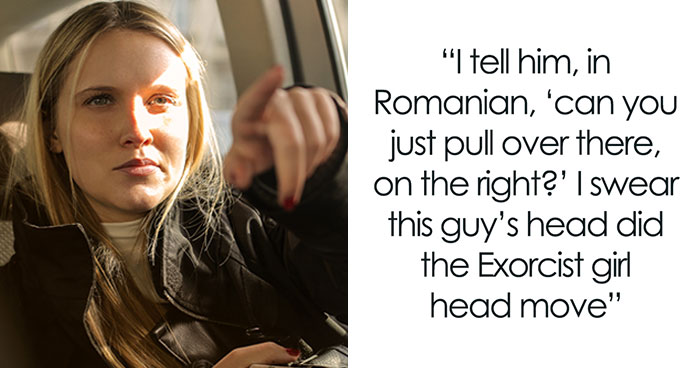



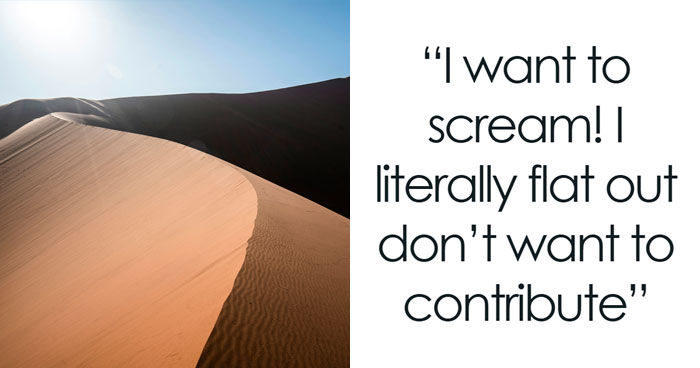


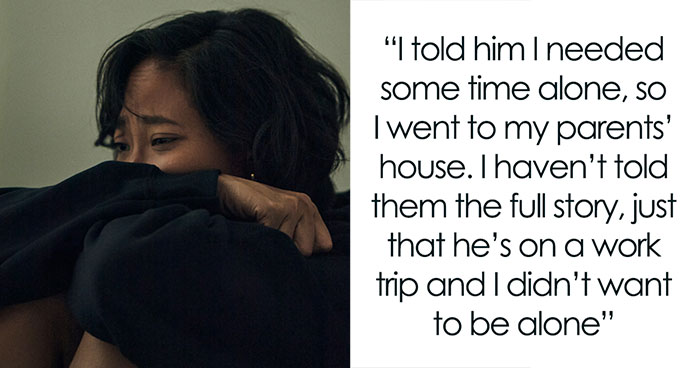
47
79